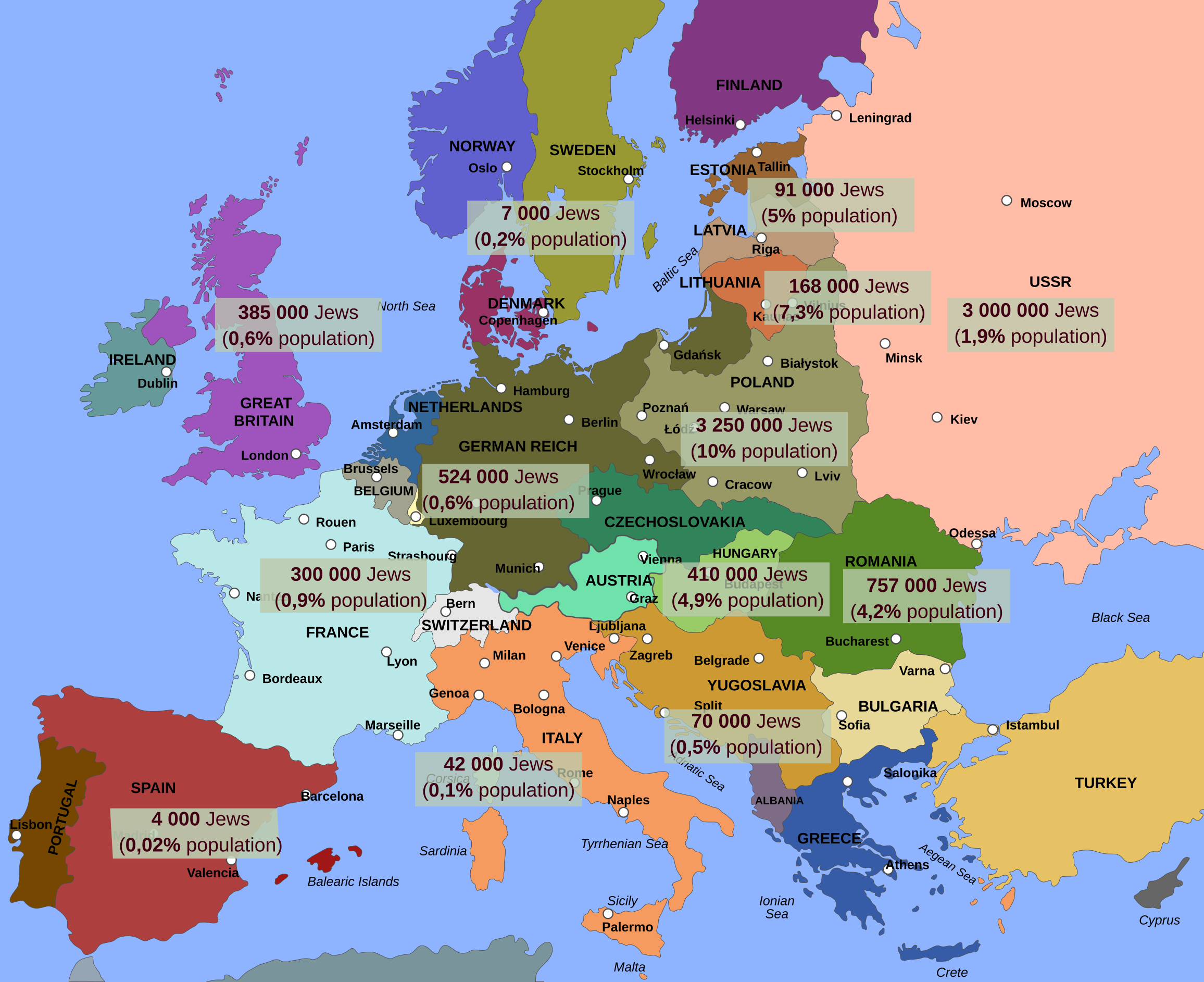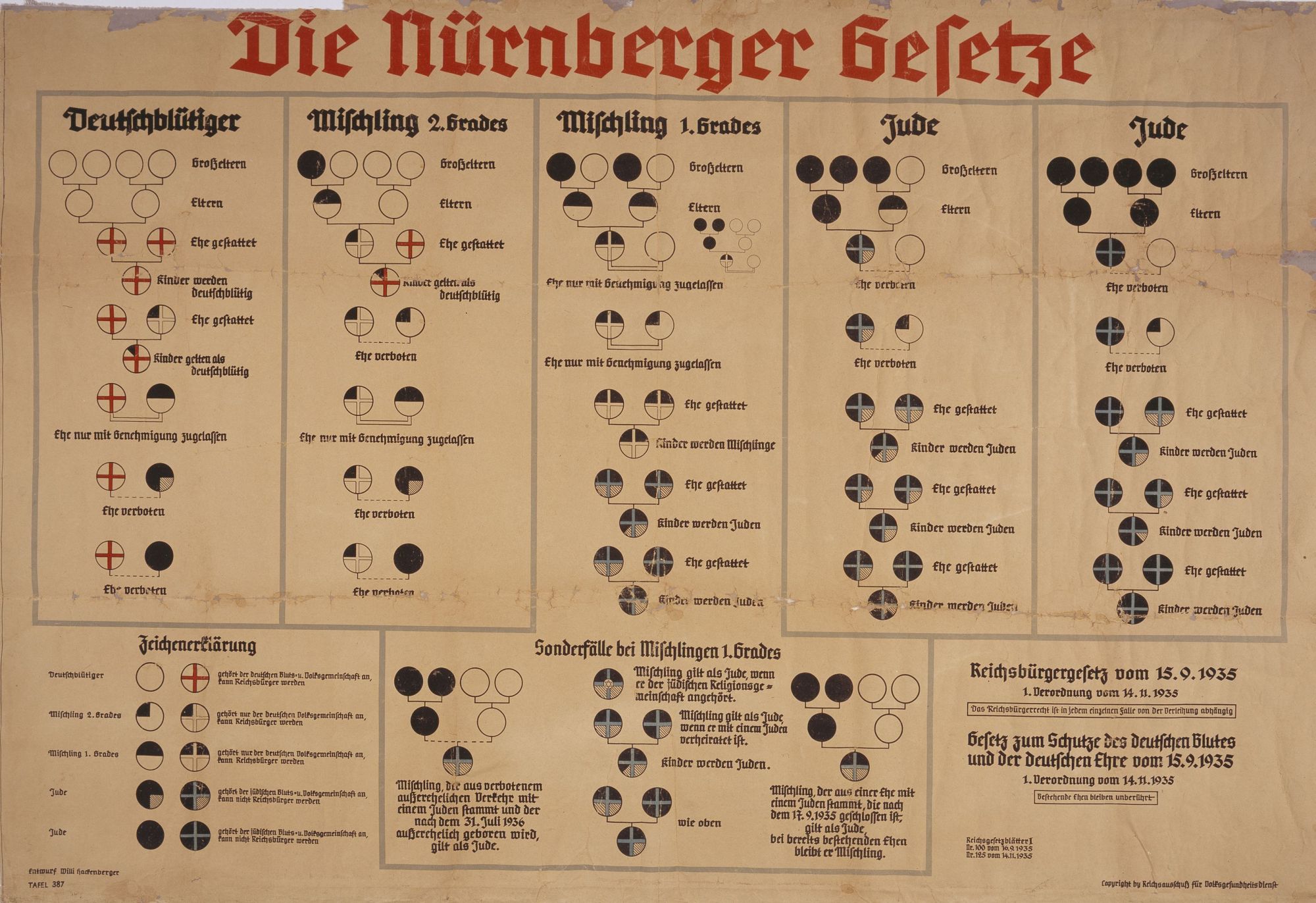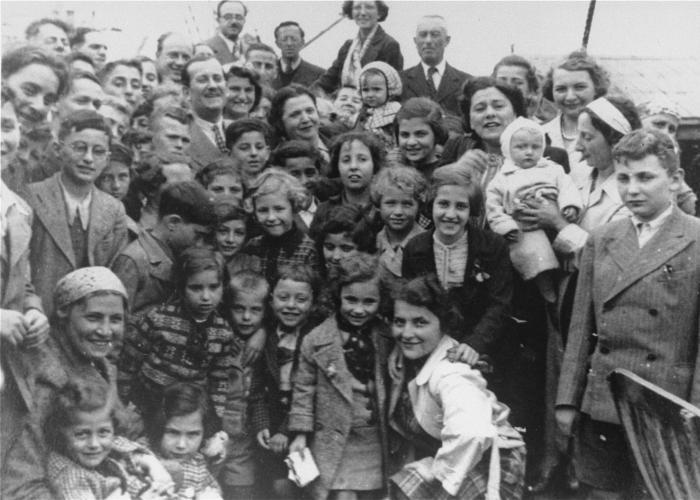Hitler’s doctrine was based on evaluating people according to their race. According to the Nazi hierarchy of races and nations, the highest position was held by the Nordic race, of which the most important were the Germans, defined as the ‘master race’ (Herrenvolk) or ‘overmen’ (Übermenschen). Slavs were considered to be ‘people of limited organisational and creative abilities’. The lowest position, according to this ideology, was held by the Jews, who the Nazis blamed for all the wrongs perpetrated against the Germans and were therefore regarded as the nation’s greatest enemies.



